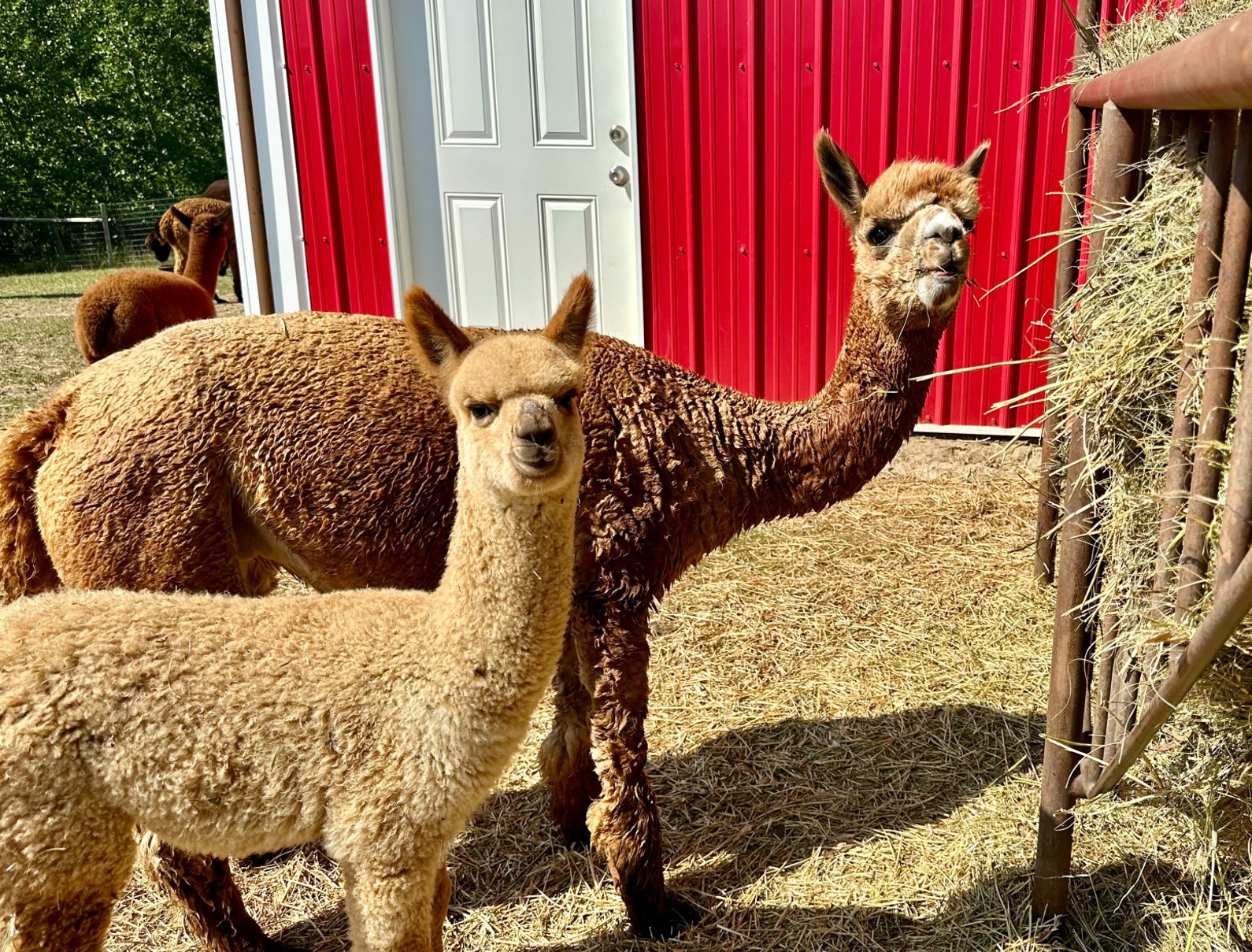Here’s why alpacas are getting the love — from the UN to Alberta Open Farm Days
;Resize=(620))
A sign on the fence outside Leanne and Kevin Sept’s alpaca farm warns that anyone calling their animals “llamas” will be fined $5.
The sign is in jest but Kevin said there are big differences between the two species.
“Weight-wise, our biggest male is 170 pounds, and a llama would probably be in that 400-to-500 range when they’re full grown.”
The ears are a giveaway, he added: “Llamas have banana-shaped ears and alpacas have ears shaped like spears.”
It’s the kind of information the Septs have been doling out for more than a quarter century with their Twisted Sisters & Company Fibre Mill & Sunnyhill Alpacas in Leduc County.
WATCH | Get a feel for Alberta alpacas at a farm southeast of Edmonton:
Take a tour of Twisted Sisters & Company Fibre Mill & Sunnyhill Alpacas in Leduc County, southeast of Edmonton, with owners Leanne and Kevin Sept.
It started as a hobby, Leanne said, but “now it’s our life.”
The couple quit their oilfield jobs and now call their 24 hectares of rolling hills dotted with fruit trees and 60 alpacas “heaven.”

Canada’s alpaca industry sprung up in the 1980s with animals imported from the High Andes of Bolivia, Peru and Chile, in part because of their adaptability to our climate.
Today, while exact population numbers are difficult to track, more than 34,000 alpacas are registered in Canada, according to the Canadian Llama and Alpaca Association. More than 40 per cent of them are in Alberta, said Paityn Eidt, vice-president of Alpaca Canada.
Eidt said the industry has had a big boost in profile this year from the United Nations, which has declared 2024 the International Year of Camelids to highlight how animals like camels, llamas and alpacas are key to the livelihoods of millions of households across more than 90 countries, particularly Indigenous peoples and local communities.
Alpacas are being showcased at this year’s Alberta Open Farm Days.
The annual event, being held this weekend, will see visitors drop in at more than 160 rural locations, from bison ranches and breweries to market gardens — and alpaca farms.
Tim Carson, CEO of the Alberta Association of Agricultural Societies, said “it’s a backstage pass to meet the producer and find out where your food comes from. It’s also an opportunity for agri-tourism.”

Eidt’s family has a herd of 40 alpacas near Edson, Alta., 200 kilometres west of Edmonton. Eidt also spends a lot of time schooling people about her animals.
Whereas llamas were domesticated to work as pack animals, alpacas are bred for the quality of their fibre so their temperaments were a lesser issue, Eidt said.
“You do get some that are characters and are goofy and comedians,” she said, adding that for the most part, “alpacas like to do things on their terms.”

They are not pets and generally don’t like to be touched, she said. “So if there is affection, you feel like you’ve earned it.”
Like other camelids, the animals are also known for spitting when they are upset.
“Nine times out of 10 as alpaca farmers, if we’re getting spit on by an animal it’s because we got caught in the crossfire between them spitting at each other,” Eidt said.
‘Watch the little ones play’
Adult alpacas produce up to five pounds of prime fleece each year. Sold raw, fleece of the highest quality can fetch up to $40 a pound.
Depending on quality, the fibre can be made into everything from felted dryer balls to socks and sweaters.
Leanne and Kevin Sept make yarn from alpaca fibre in their mill, which is steps away from where the animals graze.
“At night I crochet and knit and weave to make what you’ll see in the store,” Leanne said.

Lawn chairs are set up all around their property — places to chill out and watch the animals.
“We’ll just watch the little ones play,” Kevin said.
“It’s very calming; it’s better than a fish tank.”
Radio Active6:52Living with alpacas
Alberta Open Farm Days will welcome people from across the province to see various agricultural initiatives. This year has been deemed the year of the alpaca. Debbie Oyarzun is with Aurora Alpacas, a family-owned farm north of St. Albert.



